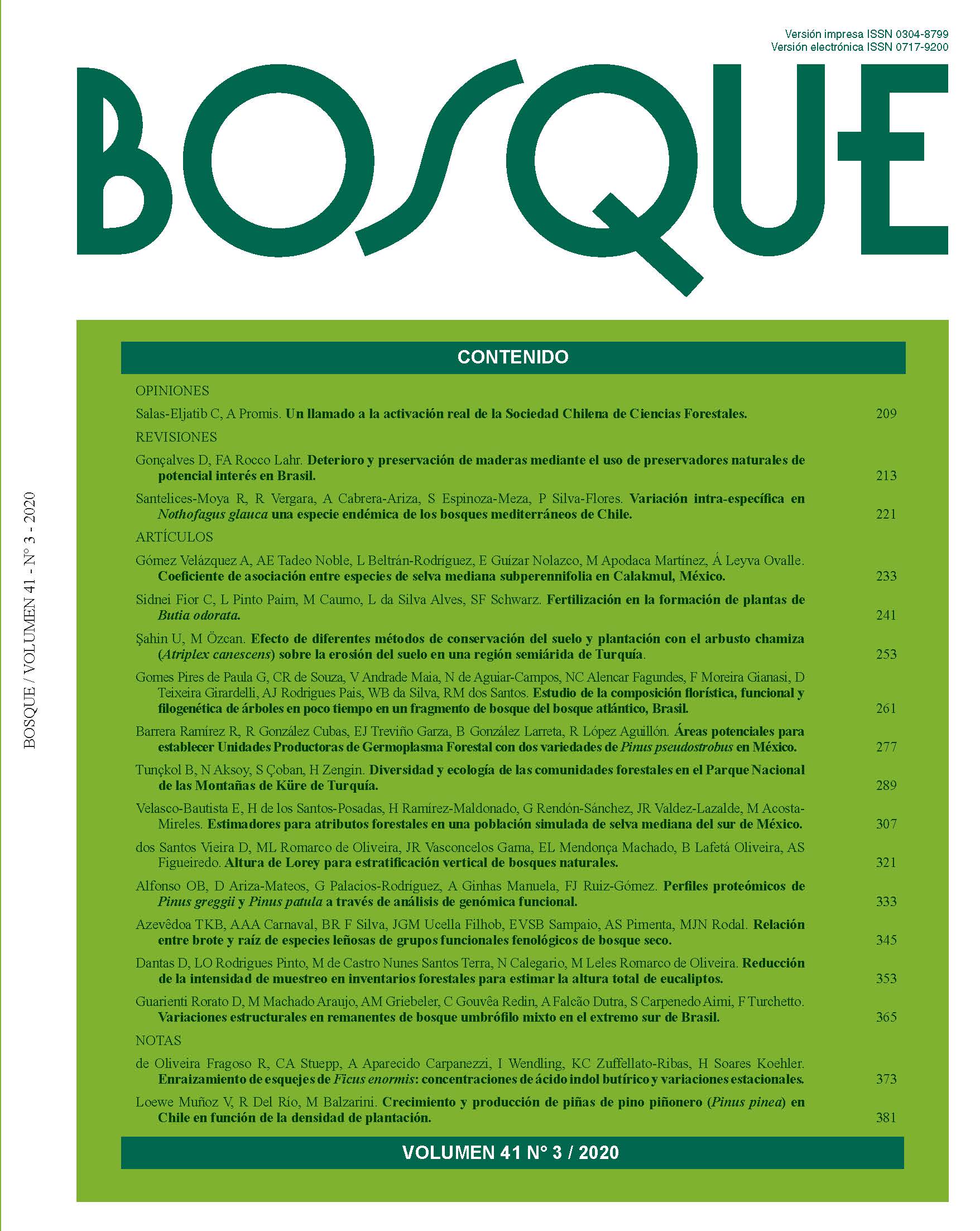Lorey height for vertical stratification of an Alluvial Ombrophilous Forest
Main Article Content
Abstract
The method, which uses the arithmetic mean and standard deviation (M1) of total heights (Ht), is often used in the stratification of uneven-aged forests and assumes that the Ht must follow a normal standard curve considering a standard deviation of the mean. In cases where this assumption is rejected, alternative methods are used, such as the fundamentals in multivariate analysis (M2) and Lorey’s mean height (M3). The objective was to evaluate the method M1 considering its assumption and comparing it with methods M2 and M3. The data were collected in 308 contiguous plots of 100 m², installed in an Alluvial Ombrophylous Forest. The assumption of the method M1 was analyzed adjusting a Normal Probabilistic Density Function, evaluated by the K-S test. The methods were evaluated using discriminant analyses, structural analyses and three-dimensional vertical profiles. It was verified that the assumption was not met. The discriminant analyses showed that the classification was 100 % correct in methods M1 and M3. The 13 most important species, in descending order, were the same in all three methods. However, from the 13th, the differences were more remarkable in the method M1. Firstly, it is recommended to use the method M3, as it is more practical and provides results that are equal to those obtained using the method M2. However, if the objective is to obtain a higher level of detail, the option is the method M2 since it allows obtaining up to five strata with 100 % correct classification.

